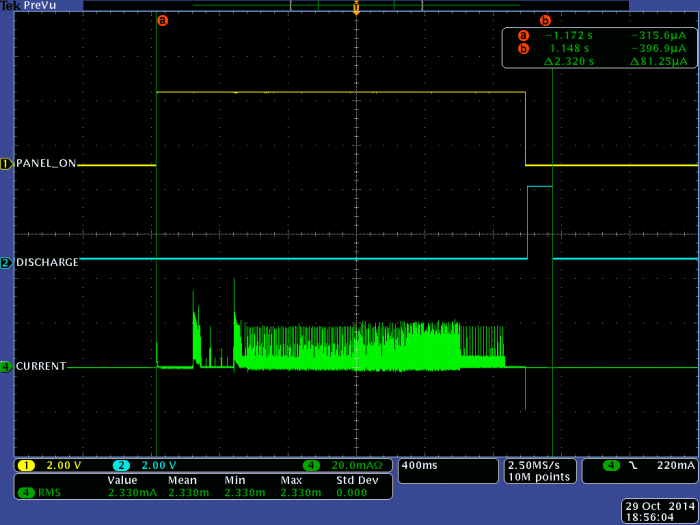Why e-paper displays will run for 22 years in coin cell powered IoT applications
2 Nov 2016
You’ve carefully selected your sensor, found the lowest power MCU for your battery-powered IoT application, optimized your code to minimize energy consumption and chosen the lowest power wireless solution to send packets of data where they need to go. Now you want to figure out how to add a display to your application without completely trashing the power budget. That’s the challenge faced by many IoT product designers, for example those designing remote meters or smart tags. If they think only in terms of dot matrix displays, it’s a challenge they’ll struggle to overcome.
Let’s assume that you want your display to operate for five years with CR2032 coin cell batteries as the power source. These have a typical stated capacity of 220 mAh, from which we might reasonably assume a nominal real-world operating capacity of 88% of this figure, or 193.6 mAH. We’ll base our energy consumption calculations on a requirement to update the display with new information six times each day.
A 2-inch TFT LCD display typically needs to be refreshed every 20 ms to maintain the image on the screen and, when the display is bright enough to read, the operating power consumption is going to be around 30 mA and standby consumption about 3 mA. The power consumption per day will be 259,203.54 mAs, resulting in a total consumption over five years of 473,046,460.50 mAs. That will require 679 batteries. In other words, you’ll need to change the battery every 2.69 days!
Compare this with an e-paper display. A typical 2-inch module that integrates the display with an external timing controller requires 2.33 mA for 2.32 seconds to completely refresh the screen. That’s a daily power consumption of 32.43 mAs, or 59,191.32 mAs over five years. This is 8.5% of the nominal capacity of a single coin cell. If you only need to update part of the information on the display, even less energy is needed and e-paper displays consume no energy at all to maintain a static image.

As a conservative estimate, we specify our 2-inch e-paper modules to support at least 50,000 updates on an energy budget of 25% of a CR2032 coin cell. This takes into account that coin cells are normally warranted for 5 years, exhibit some leakage and that other components within the module draw some current. In theory, that’s an operating life of 22 years, based on the operating conditions described. Whichever way you look at it, e-paper is the most viable display technology for ultra-low power IoT applications.
This blog first appeared on the Power Systems Design website
Blogger: Scott Soong, CEO, Pervasive Displays
Category: Blog
Back to News